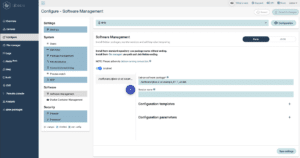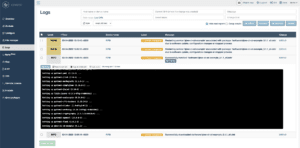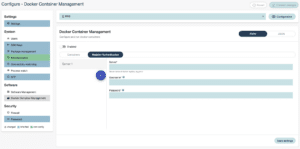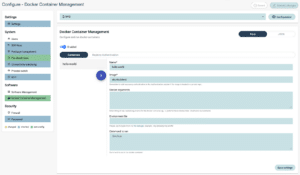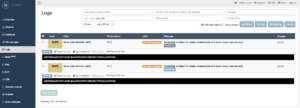One key aspect of IoT device management is the ability to update software over-the-air. This process needs to be simple, secure and reliable. Our philosophy is to support your team to do DevOps style software updates and deployments in a simple UI or through a REST API. This makes our solution ideal for any development team and device fleets of any size, independent of network architecture. Update binaries, libraries or packages from your repository or our file manager. Is your deployment strategy container based? No problem.
It is your choice.
Native / package
Docker Container
1
Upload your package or binary
Simply upload your Debian package or binary to our file manager. This upload can happen through the graphical user interface and we support an API based upload to allow to connect this to third party systems such as Github and build CI / CD (continuous integration / continuous deployment) pipelines. Then qbee takes care of the over-the-air software updates.
2
Configure how to distribute it
Use our software management to deploy and update Debian packages for devices in scope. Save and commit the software management configuration. Then the packages will be installed and if a service is defined it will be registered, started and monitored by qbee.
Use our file distribution for other binaries or packages. Distribute files or tar-files and use the flexible post command option to achieve exactly the type of installation and configuration you need.
3
Receive confirmation logs
You can assign over-the-air software updates to any group of devices. Due to its state and pull based nature the system will eventually update all devices in scope. This happens also if they are offline for longer periods of time.
Within 5 minutes all online devices will have received the update and logs about the successful deployment are sent back to the system. These can be viewed in logs.
1
Define your container repository
Please make sure that docker is installed on your system in order for qbee to manage it.
Then the first step is to define from which repository the containers are downloaded. If this is not defined the system uses docker hub. Please insert your hub URL and credentials in the according tab to connect the repository.

Do you want to try it for yourself?
Use our software management to deploy and OTA update Debian packages or binaries.

Software Updates
Explore what options you have for software updates either as a binary, a Debian package or with our docker container engine.

Remote Scripts
We can help you to run remote scripts easily. Either as a run-once configuration or through a state based mechanism.

Agent Deployment
Deploy as a Debian package or a binary for most Linux flavours. If you move to YOCTO we support that as well.

VPN
With the dynamic VPN you can decide if you want to enable VPN functionality always, never or on demand and for which devices.



